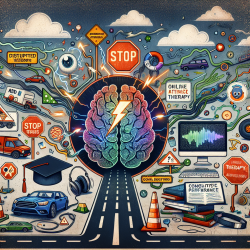In a groundbreaking study published in the International Journal of Environmental Research and Public Health, researchers delved into the intricate relationship between driving behavior, ADHD symptoms, and cognitive performance. The study titled "Driving Accidents, Driving Violations, Symptoms of Attention-Deficit-Hyperactivity (ADHD) and Attentional Network Tasks" offers crucial insights that can significantly impact how practitioners approach ADHD in the context of driving safety.
Key Findings from the Study
The study involved 274 participants and assessed their driving behavior, ADHD symptoms, and performance on attentional network tasks. Here are some of the pivotal findings:
- Higher ADHD symptoms were associated with more traffic violations and accidents.
- Performance on attentional network tasks predicted traffic violations but not accidents.
- Age and driving experience also played a significant role in driving behavior.
Practical Applications for Practitioners
As a practitioner, you can leverage these findings to enhance your therapeutic strategies and interventions:
1. Focus on ADHD Symptoms
Given that higher ADHD symptoms are linked to more traffic violations and accidents, it's essential to prioritize ADHD symptom management. Incorporate strategies like cognitive-behavioral therapy (CBT) and mindfulness practices to help clients manage their symptoms effectively.
2. Cognitive Training
The study highlighted the role of attentional network tasks in predicting traffic violations. Implement cognitive training exercises that focus on improving alertness, orienting, and executive function. These exercises can be integrated into your therapy sessions to enhance cognitive performance.
3. Personalized Interventions
Recognize the unique needs of each client. Younger drivers with ADHD symptoms may require more intensive interventions compared to older, more experienced drivers. Tailor your approach based on the individual's age, driving experience, and specific ADHD symptoms.
Encouraging Further Research
While this study provides valuable insights, there is still much to learn about the relationship between ADHD and driving behavior. Encourage your clients and colleagues to stay informed and participate in ongoing research. The more we understand, the better we can tailor our interventions to improve driving safety for individuals with ADHD.
Conclusion
The intersection of ADHD symptoms and driving behavior is complex but critical. By focusing on symptom management, cognitive training, and personalized interventions, practitioners can make a significant impact on their clients' driving safety. To read the original research paper, please follow this link:
Driving Accidents, Driving Violations, Symptoms of Attention-Deficit-Hyperactivity (ADHD) and Attentional Network Tasks.










